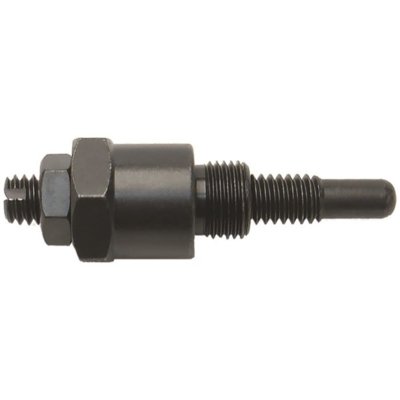Made myself a Piston Stop for finding TDC with the heads on. Things you will need:
Long reach spark plug
3/8 x 16 x 2 1/4 bolt
Hack saw
5/16 drill bit
3/8 x 16 tap
View attachment 886352
Cut the shoulder that's holding the porcelain all the way around. Don't saw straight through. Turn the plug as you go, stopping when you hit the porcelain. Tap around the hex on the plug to release the glue that's holding it in. Cut off the ground strap and tap the electrode and porcelain out. Also remove the sealing ring on the threads.
Useing a 5/16 drill bit, drill through the center. The inside diameter is already 5/16 but there is a shoulder halfway down. Follow up with a 3/8 x 16 thread tap.
Use a 2 1/4 bolt with at least 1 1/4 of thread.
View attachment 886353
That's all there is to it
View attachment 886354
To use the stop:
Remove all the spark plugs in the engine.
Find the piston top, by turning the crank by hand, useing a wire, or what I like to use, a plastic wire tie, in the #1 plug hole. Try to find the TDC by hand first before inserting the tool. Then back if off just a little. Then insert the tool with the bolt backed off. Run the bolt in until you feel it just touch the piston. Make a mark on the damper.
View attachment 886355
Now rotate the crank in the opposite direction until you feel it touch the stop. Go slow and let the compression bleed off. When the piston contacts the stop, make a mark on the damper.
View attachment 886356
Half the distance between the marks is your TDC.
Fine tuning where you set the bolt, can narrow the distance between your marks. A little practice and patience will get you good results. Great for checking your dampner's accuracy.
Or you can buy one. You just need to know your plug size...
https://www.summitracing.com/parts/pro-67581/


















